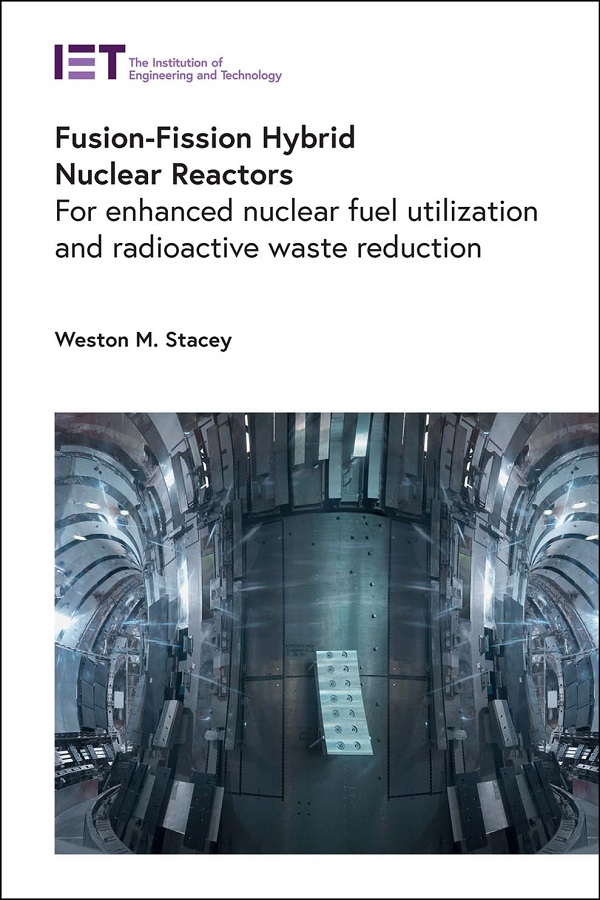- Agricultural Engineering and Technology
- Applied Physics
- Built Environment
- Computing and Networks
- Control, Robotics and Sensors
- Electrical Regulations
- Electromagnetics and Radar
- Energy Engineering
- Healthcare Technologies
- History and Management of Technology
- IET Codes and Guidance
- Manufacturing
- Materials, Circuits and Devices
- Model Forms
- Security
- Telecommunications
- Transportation

Fusion-Fission Hybrid Nuclear Reactors
For enhanced nuclear fuel utilization and radioactive waste reduction
by Weston M. Stacey
Nuclear energy is contributing to the long-term solution to stave off climate change. However, current nuclear fission technology accesses only about 1-3% of the nuclear energy content of natural uranium, which is inefficient, and also creates a radioactive waste disposal problem.
Combining nuclear fission technology with emerging nuclear fusion technology to create a fusion-fission hybrid would yield extra fusion neutrons to 1) convert much more of the uranium into fissionable material, which would increase efficient utilization of the nuclear fuel resource, and 2) significantly reduce (by fission) the most long-lived radioactive nuclear waste.
This book describes fusion-fission hybrid physics and technology. The first parts briefly review nuclear fission principles and describe design and safety of nuclear fission reactors; then the fundamentals of nuclear fusion and fusion reactor concepts are described, together with ongoing and future challenges and anticipated developments in this not-yet matured technology. Chapters cover the scientific basis of nuclear fission and the fission fuel cycle, advanced fission reactors, safety aspects, the scientific and technological basis of nuclear fusion power, future improvements expected, and then the fusion-fission hybrid (FFH) breeder and burner reactor concept principles, with illustrative FFH design concepts, safety analyses, and examples of the use of fusion neutrons for helping to achieve burning and breeding fission fuel cycles.
This concise work is essential reading for researchers and policy makers in nuclear energy research and engineering, including advanced students.
About the Author
Weston M. (Bill) Stacey is emeritus Regent's Professor of Nuclear Engineering at Georgia Institute of Technology, United States. His career in nuclear science and engineering spans 60+ years of research in nuclear reactor physics and nuclear reactor design, fusion plasma physics and fusion reactor design, at Knolls Atomic Power Laboratory, Argonne National Laboratory and Georgia Tech. He led the international IAEA INTOR Workshop (USA, USSR, EU, Japan, 1977-88) project to assess the readiness of the world's fusion programs to build an experimental fusion power reactor, to evaluate the required additional R&D, and to develop the INTOR conceptual design; this project evolved into the current ITER project for the first experimental fusion reactor. He is author of more than 350 research papers and 7 books on nuclear fission and fusion physics and technology and recipient of the ANS Seaborg and Wigner Reactor Physics awards, the DOE Distinguished Associate award and two Certificates of Appreciation, the Fusion Power Assoc. Distinguished Career award, and is a lifetime member of Who's Who.
Publication Year: 2022
Pages: 296
ISBN-13: 978-1-83953-651-9
Format: HBK
